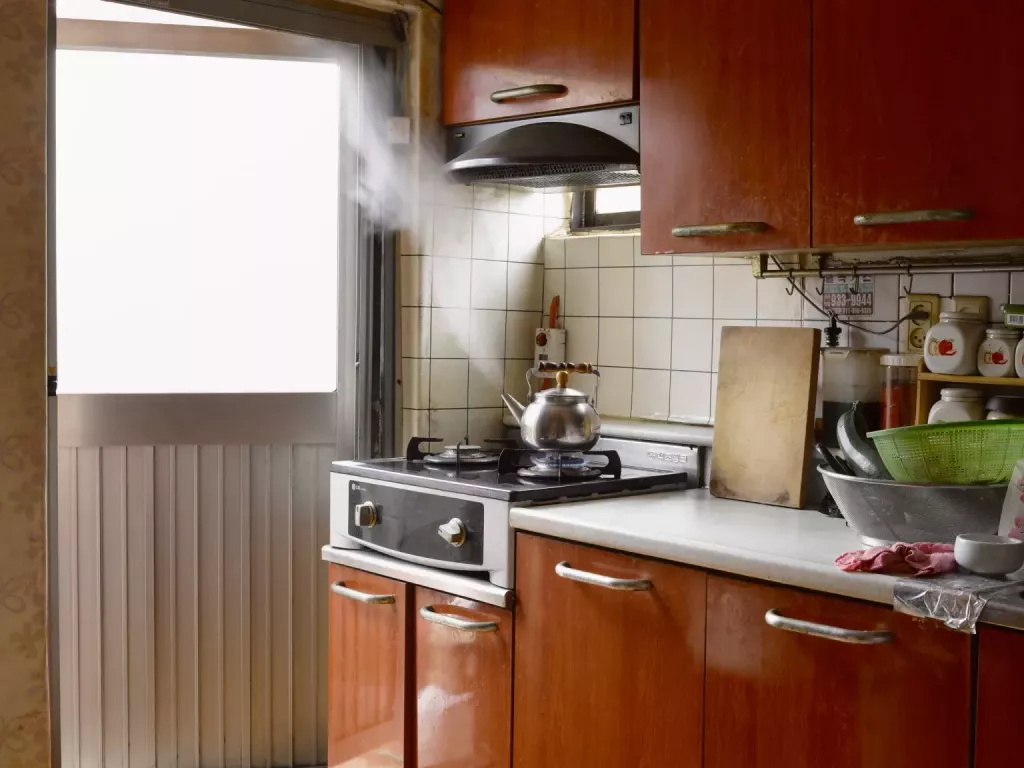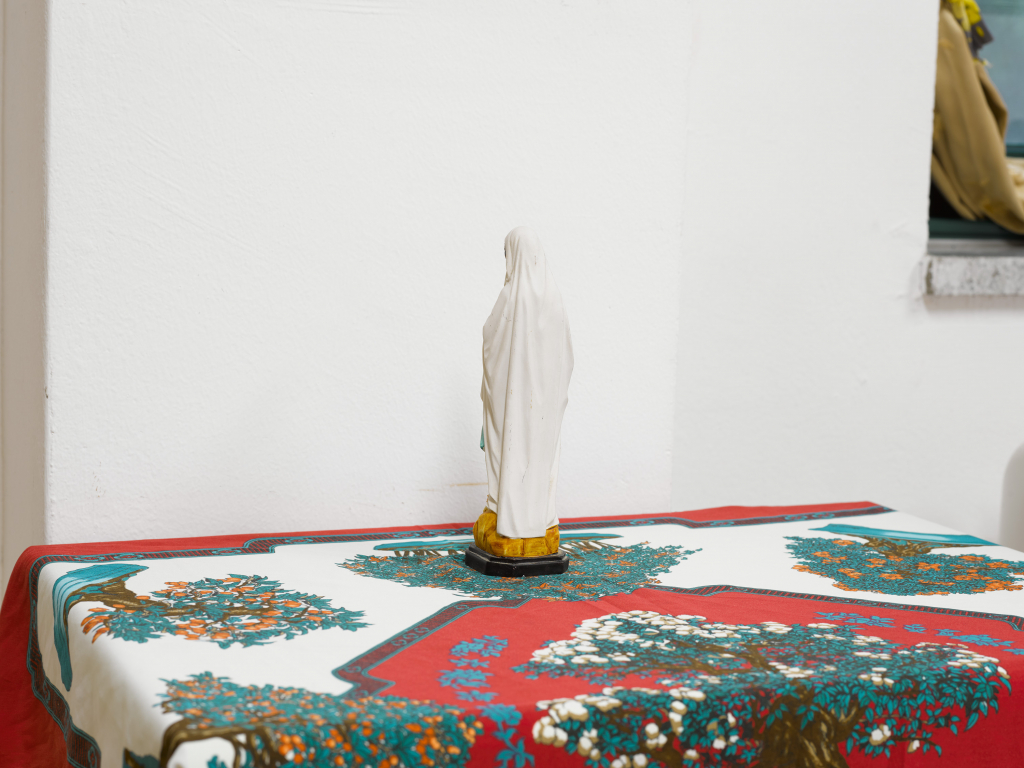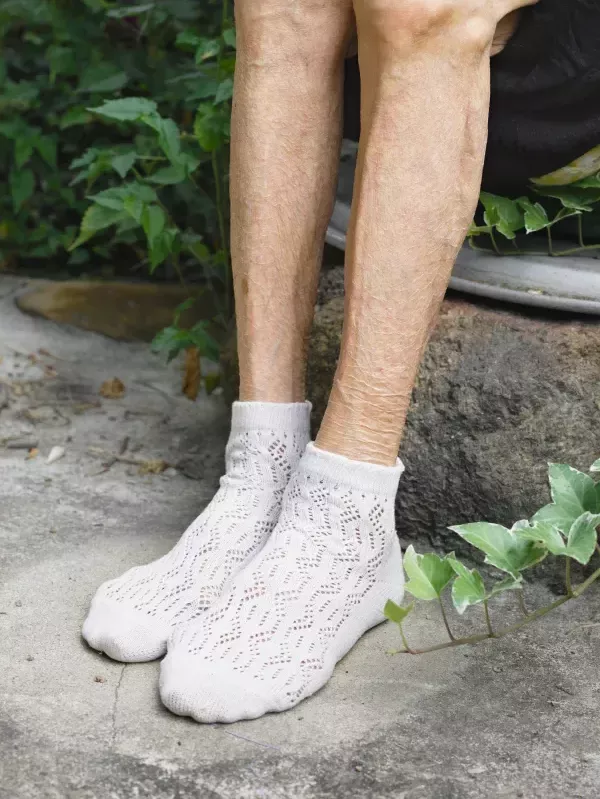Hyoyeon Kim | Abnormal Sense
March 20, 2024
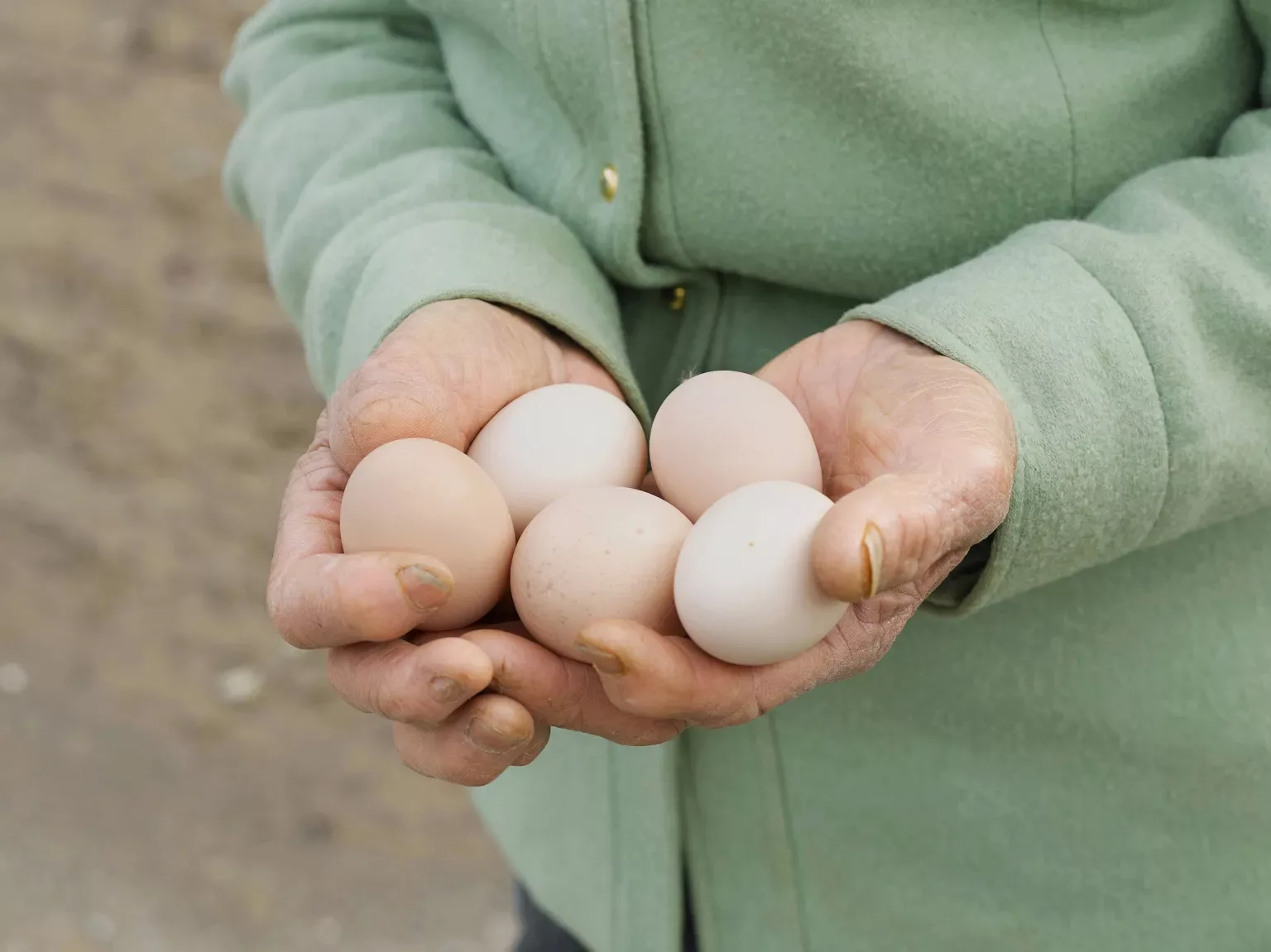
This year Lisa and I had the honor of being selected by Fotofest to contribute to the 2014 Ten by Ten exhibition. This show highlights the works of 10 artists, nominated by 10 different curators. We were excited to feature the work of artist, Hyoyeon Kim.
Hyoyeon Kim began this project while attempting to untangle threads of her family history from the wreckage of the atomic bomb. Kim’s maternal grandmother lived near Hiroshima before World War II, but when she became pregnant, she moved to Korea with her new husband shortly before the bomb was dropped. Other members of the family stayed behind, and only one survived the nuclear explosion. These personal connections led Kim to investigate a larger population of Korean families similarly affected by the bombing.
In her research, Kim found that “Korean atomic bomb victims are a special group in that they were constructed, not by their own volition, but by the macro-level forces of war, colonialism, forced conscription and migration.” A large number of Koreans from the region of Hapcheon were settled in Hiroshima. When the bomb was dropped, the immediate death toll of Koreans came to thirty thousand, and nearly forty-nine thousand ultimately died from radiation exposure.
After the war, around eleven thousand survivors made their way back to Hapcheon. Societal prejudice formed towards victims and their descendants, relating to health issues and genetic shifts associated with radiation exposure. As a result, the communities became somewhat closed. Observing the longevity of these effects, Kim began to refer to the second and third generation descendants of victims as the ‘Atomic Generation.’
While forming Abnormal Sense, Kim spent nearly three years visiting and living near Hapcheon, talking with families over time. She gained the trust to sit quietly in the room with the people she photographed. And this perspective is what she offers the viewer: calm minutes of everyday life with a complicated history simmering below the surface.
Though Kim references past geopolitical forces and sets off an alarm about current nuclear threats, her photographs are anchored by what is personal, rather than what is political in this story. In the home of a survivor, portraits of ancestors and children are collected on a table, a continuum of generational pride and love. Among them, a glass picture frame is embedded with a small clock, an odd symbol of time moving forward, even as each portrait remains fixed in the past.
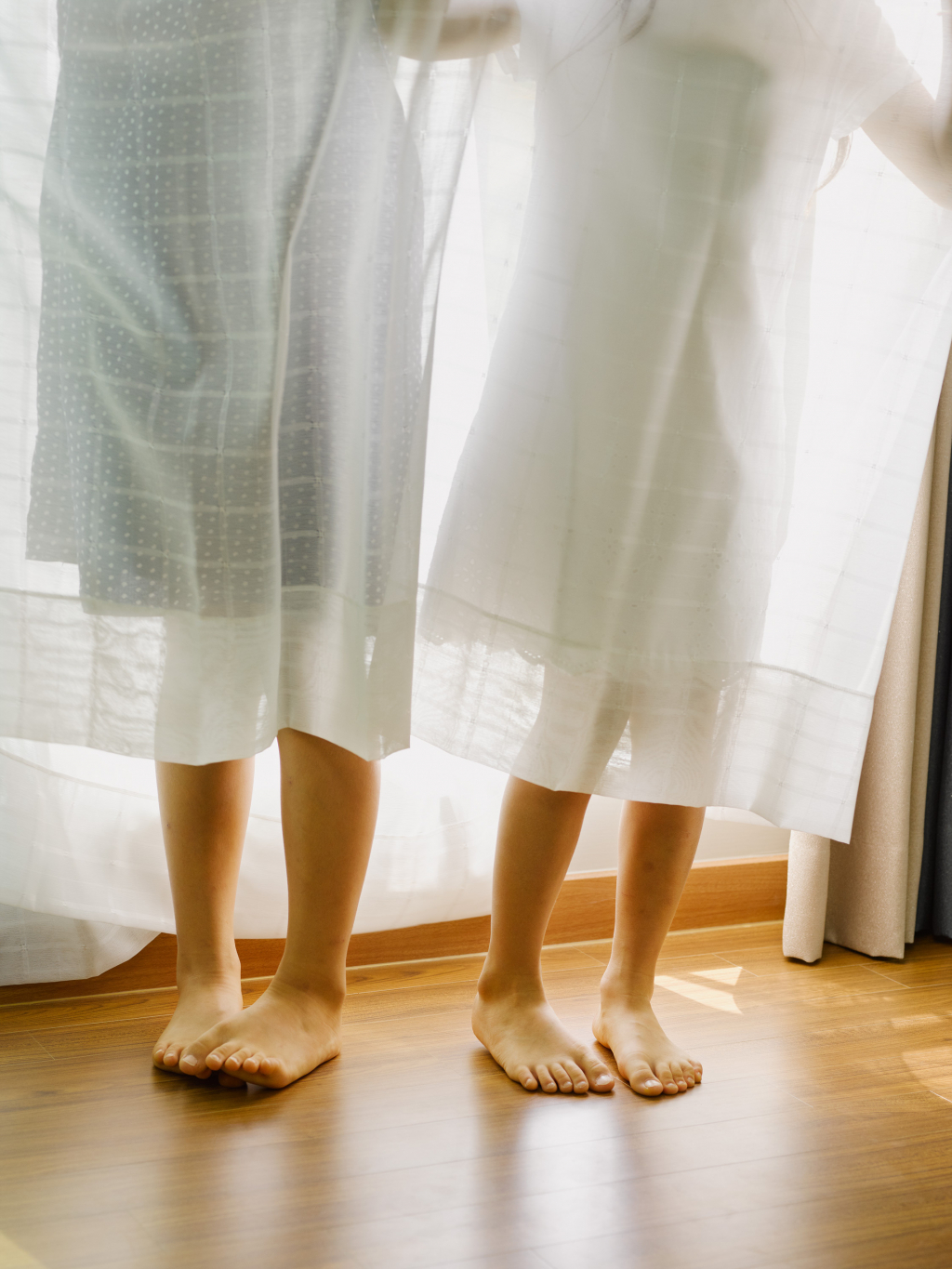
Throughout the series, Kim builds her images around the interplay of visibility and invisibility. She tucks meaning into both what is revealed and what is hidden. During an interview for this essay, Kim observed that descendants of the victims can seem like ghosts caught between countries. In this context, the photograph of two girls pretending to be ghosts takes on a different meaning. As the eye passes from the playful curl of the toes up through the curtains, an eeriness settles in. Behind gauze, the girls are recast into veiled silhouettes. Their fading forms call to mind the cloud of dust that, as it descended, alchemized skin into spirit.
There is a conflict for the viewer within each image. Should the photographs be understood as everyday familial scenes, or should all be viewed in light of the bomb and its aftereffects? Abnormal Sense gives you the choice to see either way; the goal may be to hold both perspectives at the same time.
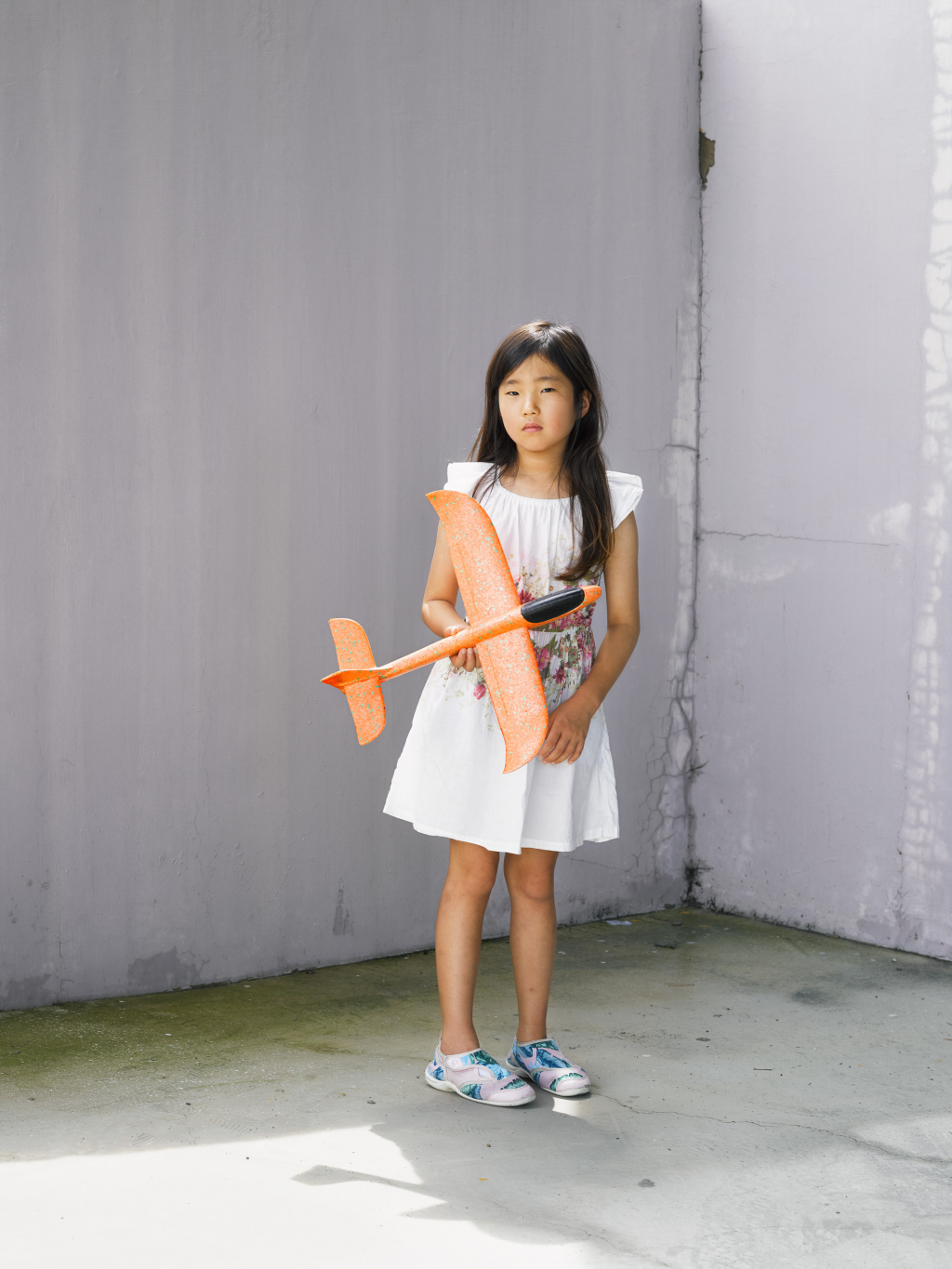
A young girl holds a model plane. It sits awkwardly in her small hands, and although it is a toy, it is menacing. It looks like it is flying across her body. There is something vulnerable in the inward rotation of her right foot; is it the casual posture of a child or a subtle sign of down syndrome? Whether or not she has a genetic impairment is unclear. Might the lens of nuclear fallout cast a false interpretation of the scene?
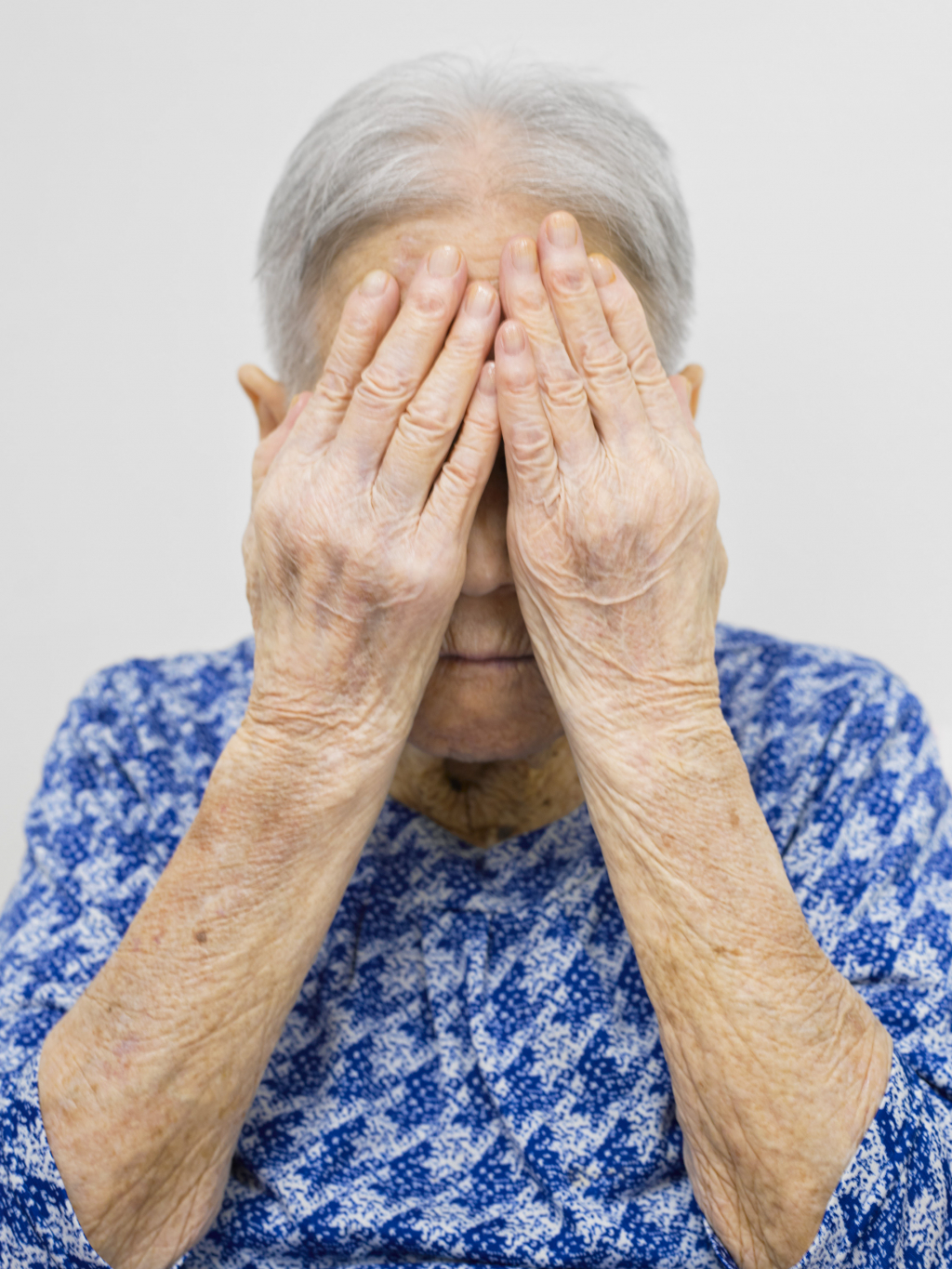
Kim’s project moves back and forth between generations. A woman is portrayed with her hands covering her face. While sitting for the portrait, she was actively remembering the moment of the bomb’s explosion. The camera is slightly shaken, in resonance with the woman’s feeling. She is ninety-one years old, and she tells Kim that every day she forgets things, but she remembers everything about that day. With her features obscured, the viewer is left to imagine her face, and it is possible to see every victim within her form. Linked together, these two images convey the scope of Kim’s project. The atomic blast cannot be understood only as one catastrophic moment in the past. Its aftereffects play out in present day lives and will continue to have an indefinable effect on future generations.
The project conveys two different ways of acknowledging trauma: cognitive understanding, and another, deeper kind of knowledge, stored in the body. In addition to making photographs, Kim interviewed girls from the Atomic Generation. They did not have the direct experience of their grandparents and some did not know extensive details about the war. Yet the conversations awakened something from an unconscious place, the type of emotion that is felt in the body before it makes its way to the mind.
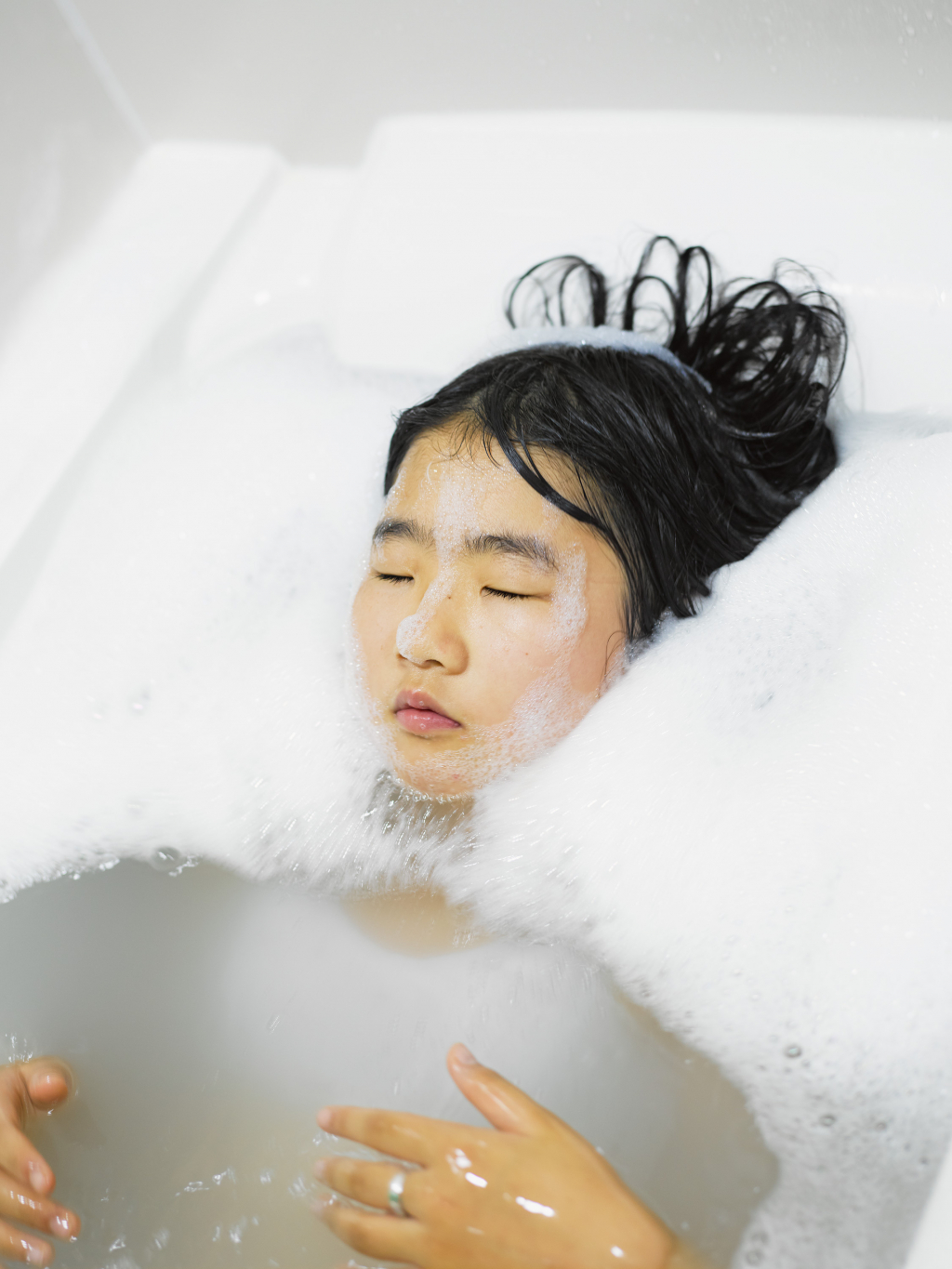
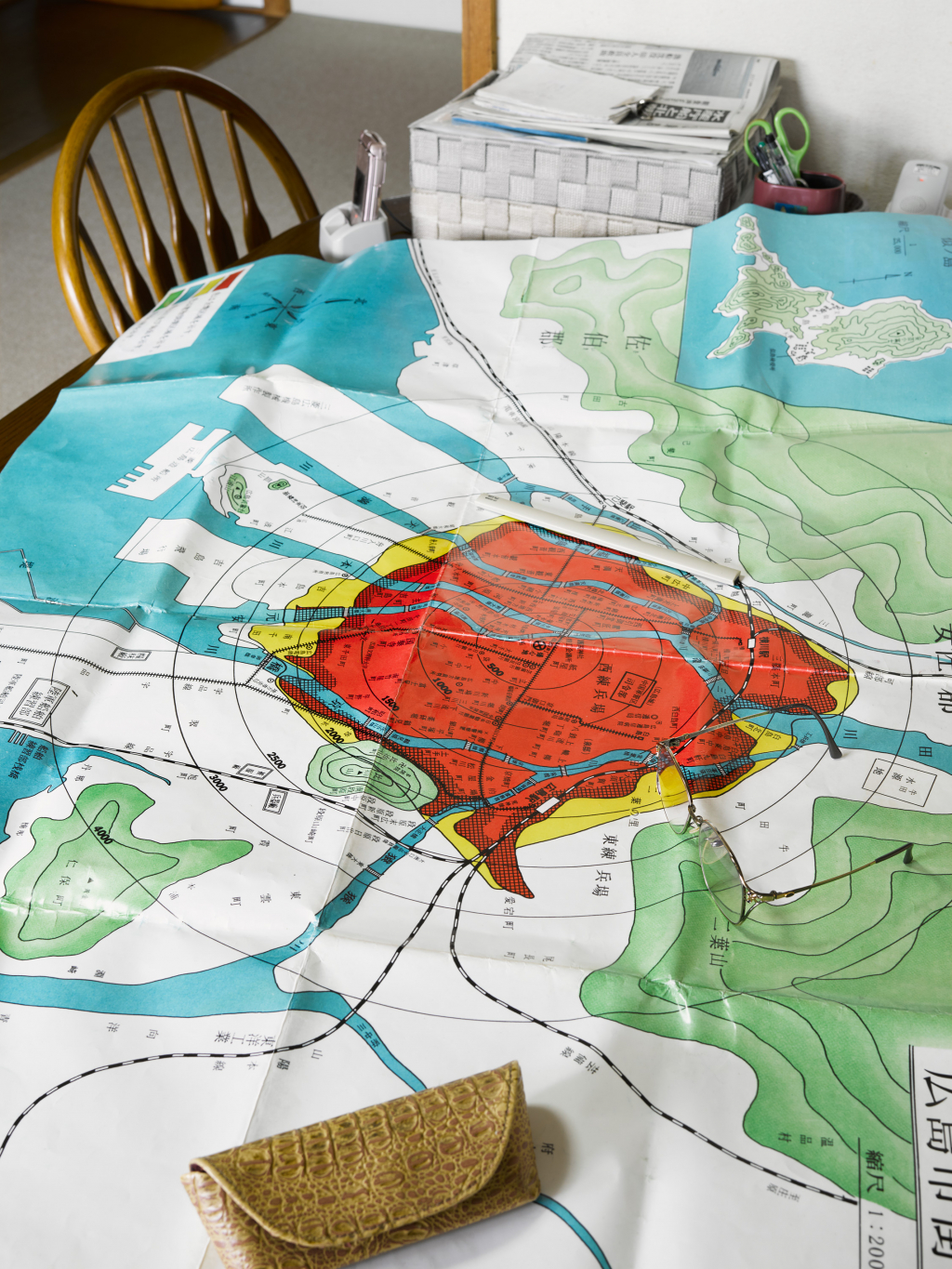
When learning the details of what happened to her ancestors, one of the girls had the sensation that she was choking. She felt the need to be submerged in water, and as she tried to calm herself in a bath, bubbles framed her face like dust. Seeing the girl, Kim remembered a map of Hiroshima belonging to a survivor. The city, framed by water, is defined by a red circle. When the bomb was dropped, it was so unbearably hot that many people jumped into the bay to escape the burning heat.
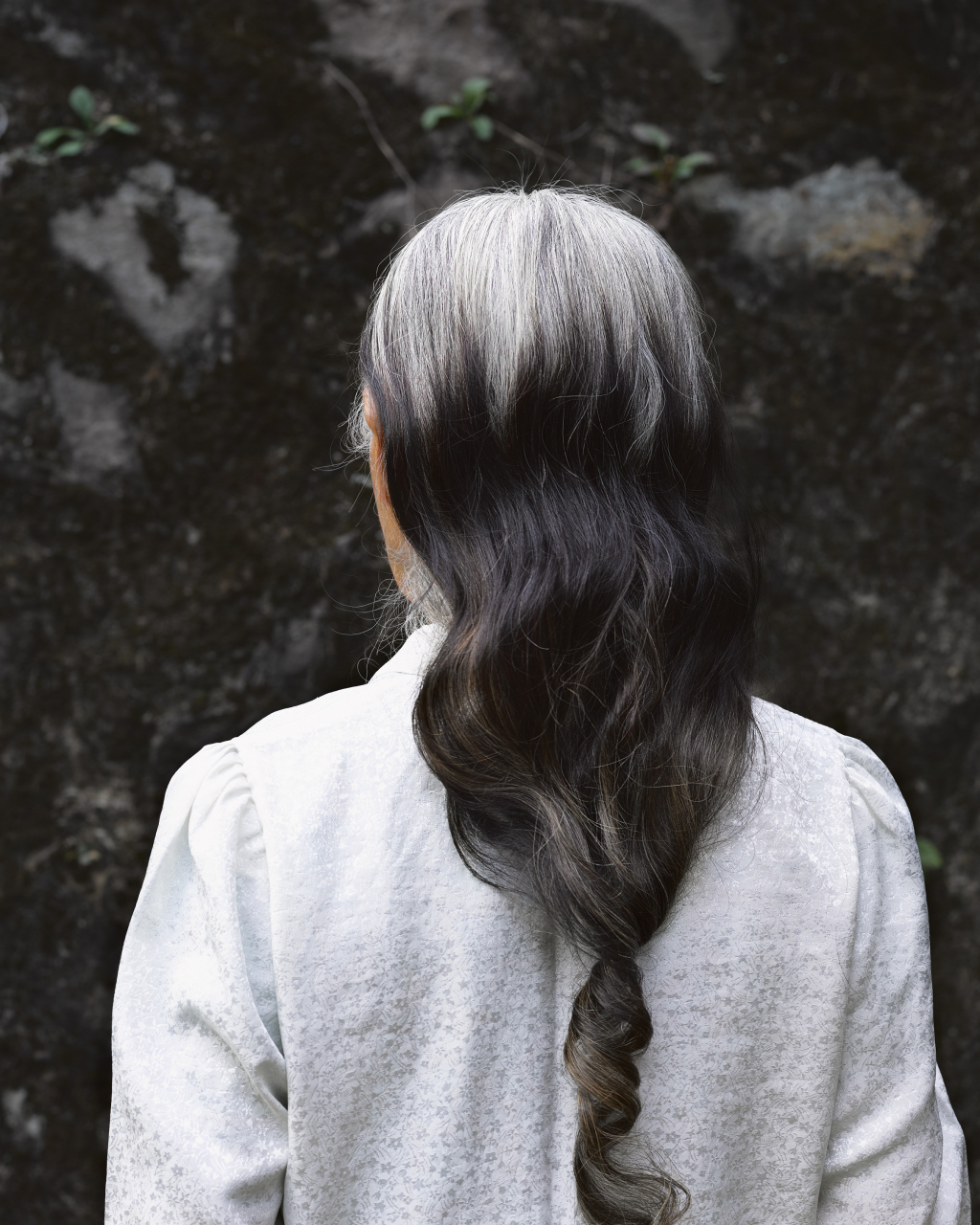
The subject is hard to absorb, but Kim provides a way in through the use of soft light and delicate treatment. In another image of a first generation survivor, a woman stands with her back to the camera. The dome of her natural grey hair meets the line of black dye, before tapering into a single curl. Looking at her hair is like observing striations of the earth’s crust– each new layer formed from weathering, erosion and cementation, amassing a record of time and events passed. How much memory, how many years are made visible in this twist of hair?
Kim is scrupulous in the details she chooses to include or omit. Her photographs allow the invisible parts of the survivors’ stories– the parts that are carried internally in the bodies of victims and their descendants– to be seen.The older generation are concerned, not about the bomb; now they are concerned about their children. Abnormal Sense illuminates the lives of those who still have to deal with an act of war, more than seventy-five years later. Perhaps the physical and emotional aftereffects passed on through the Atomic Generation carry the longest lasting traces of nuclear fallout.
- Mia Dalglish + Lisa Woodward
See more of Kim’s work HERE
